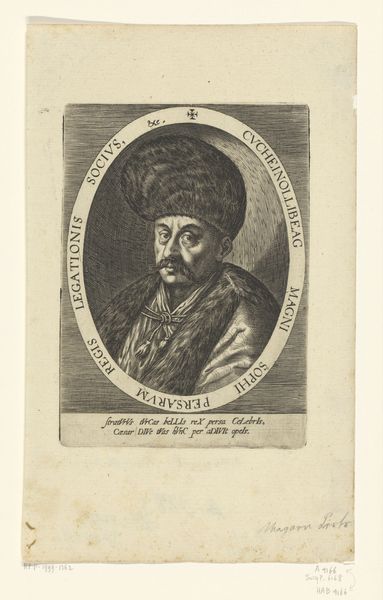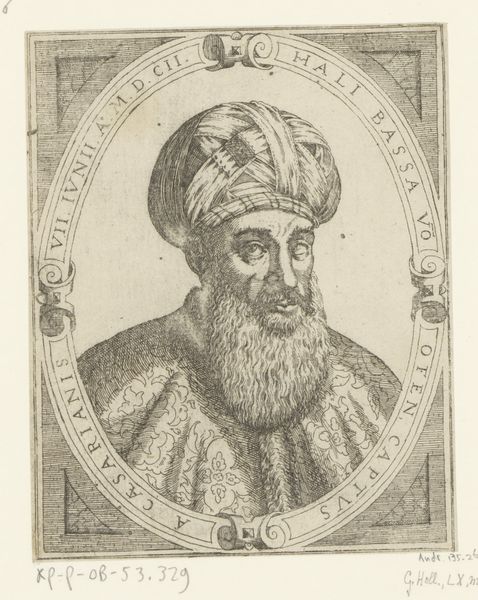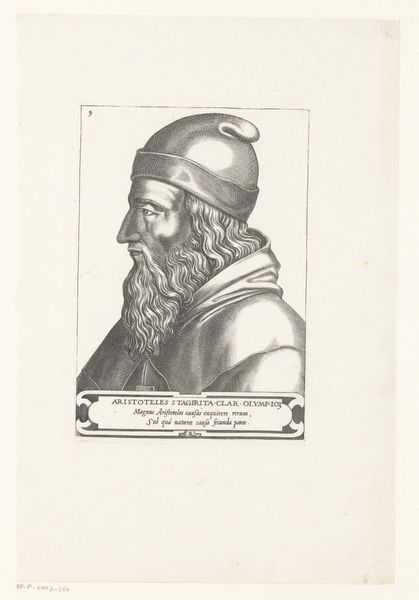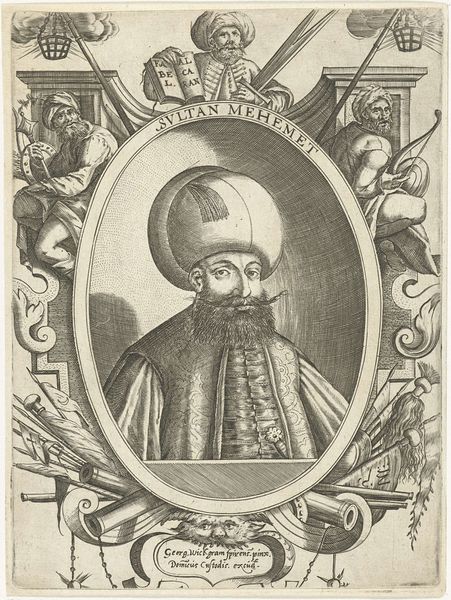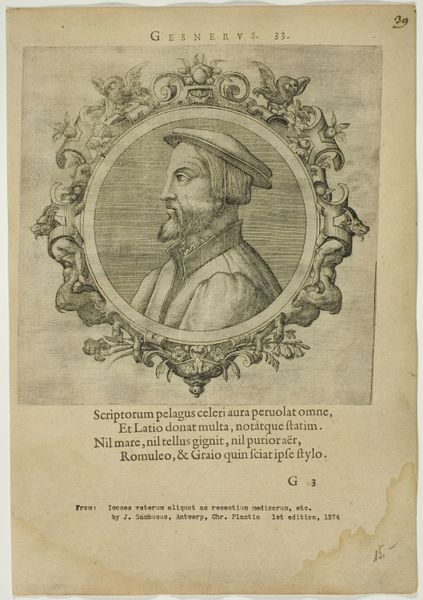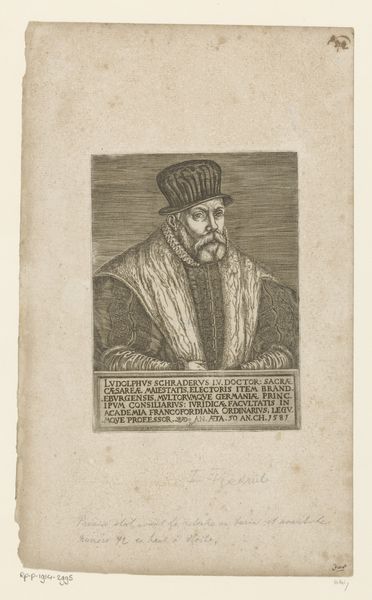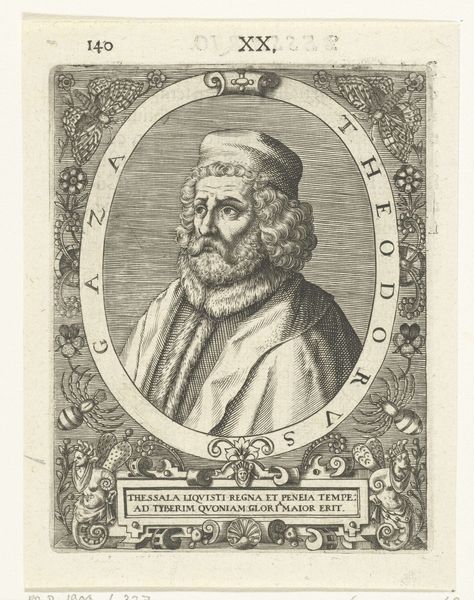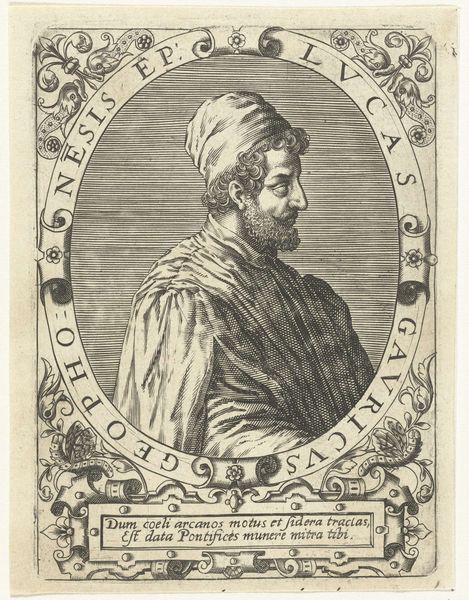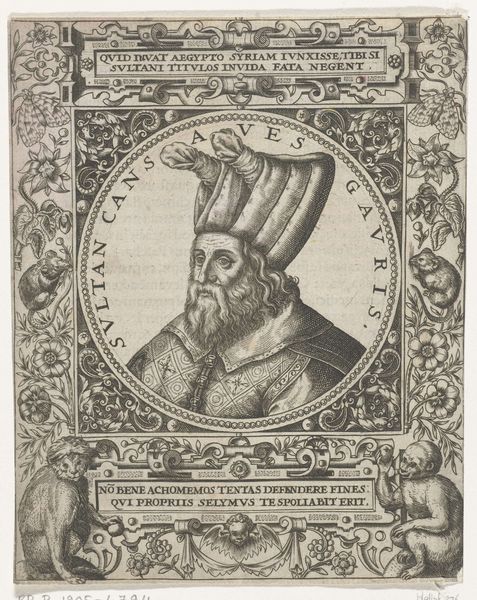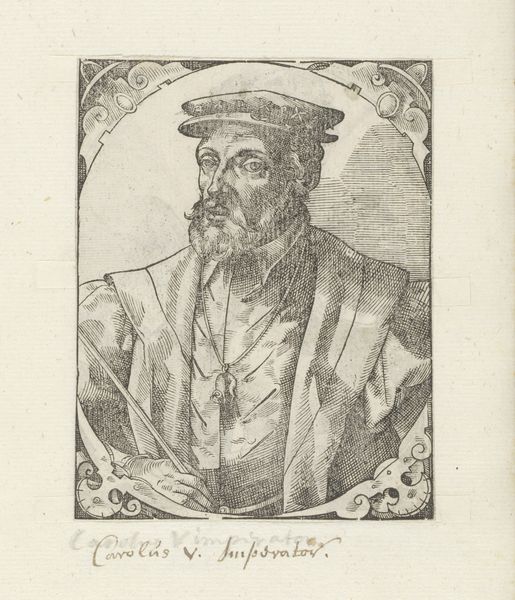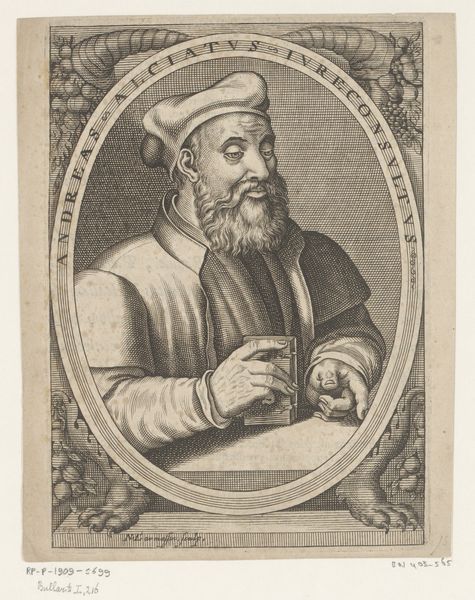
print, engraving
#
portrait
# print
#
old engraving style
#
figuration
#
history-painting
#
academic-art
#
engraving
Dimensions: height 206 mm, width 129 mm
Copyright: Rijks Museum: Open Domain
This engraving by Jean Frosne depicts Louis the Stammerer, King of France. Here, the fleur-de-lis, prominently displayed on his headgear and coat of arms, serves as a potent emblem of French royalty. The fleur-de-lis, with its stylized lily form, carries a lineage stretching back to ancient heraldry and religious symbolism. Initially a representation of purity, associated with the Virgin Mary, it was adopted by the French monarchy, becoming inseparable from the crown itself. But its path wasn't linear; in other contexts, the lily has been associated with transience, or even deception. Consider how symbols evolve, morphing through history, influenced by collective memory and unconscious desires. The fleur-de-lis, in its recurring appearance in art and culture, acts as a powerful psychological trigger, resonating with themes of authority, legitimacy, and national identity, engaging viewers on a deeply subconscious level. Its reappearance in this 17th-century portrait shows a cyclical progression. It resurfaces, evolves, and takes on new meanings in each historical context.
Comments
No comments
Be the first to comment and join the conversation on the ultimate creative platform.
